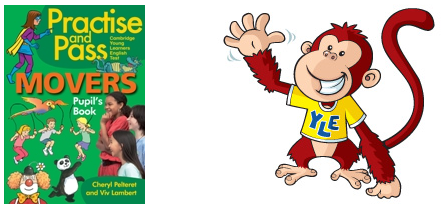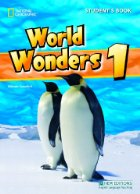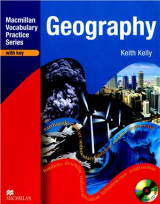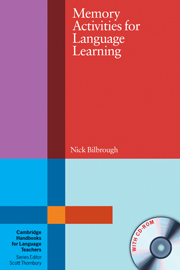Short Book Reviews
Hanna Kryszewska, Poland
Hanna Kryszewska is a teacher, teacher trainer, trainer of trainers. She is a senior lecturer at the University of Gdańsk, and EU Teacher Training College where she trains pre-service teachers. She is also Director of Studies at SWPS, Sopot, Poland. She is co-author of resource books: Learner Based Teaching, OUP, Towards Teaching, Heinemann, The Standby Book, CUP, Language Activities for Teenagers, CUP and a course book series for secondary schools: ForMat, Macmillan. She is also co-author of a video based teacher training course: Observing English Lessons. Hania is a Pilgrims trainer and editor of HLT Magazine.
E-mail: hania.kryszewska@pilgrims.co.uk

Practise and Pass. Cambridge Young Learners Test.Movers. Pupil’s Book. C. Pelteret and V. Lambert. (2010) DELTA Publishing. ISBN 978-1-905085-39-2, pp77.This activity based book is part two in a series preparing young learners for the Cambridge Young Learners English Test. The book prepares YL for the Movers exam. It is based on the revised exam syllabus and it offers preparation, practice and sample exam papers. The book has a format similar to the exam format, including the design and type of artwork the candidates will encounter in the exam. At the same time, real life photography illustrates the exam situations the learners may find themselves in. However, there are only children presented, whilst in the exam there is one child examined by an adult. The material contains exam tips and grammar boxes, neat and clear. This material is great exam practice material which can rarely be found on the publishing market. The teacher’s book includes audio CD, key, tapescript, photocopiable cards for extra activities, tips and advice for the teacher. I believe the Teacher’s Book should contain the Summary of Procedures not the Pupil’s Book as the English level and factual content is way above the learner’s level.

World Wonders 1. Student’s book. M. Crawford (2010) New Editions. Heinle. ISBN 978-1-4240-5933-1, pp 126. The addressees of this coursebook are young learners aged 9-10 who are at the beginners level. The formula of the course is very innovative and is the result of a partnership between the Heinle CENGAGE Learning Publishing House and National Geographic. This cooperation has led to the production of many language learning materials which bring our world and its different cultures into the classroom. This course book is in keeping with this union and has breathtaking photography by the best photojournalists and facts which come from the magazine’s articles. The texts teach the learners about the world we live in, its people, its customs, and its wonders. They also teach respect for cultural diversity and respect for people from other countries and continents. The course is a true combination of language and content – CLIL. Grammar structures, vocabulary and language skills revolve around the subject of the natural world and the environment. Unfortunately, the remaining artwork in the course book is in stark contrast to the fantastic visual material from National Geographic. The remaining photography and cartoons are a bit bleak and quite old fashioned. But the additional material on DVD is also authentic National Geographic material. The course is also accompanied by an audio CD, a work book, a grammar book, an interactive CD-ROM and a teacher’s book

Geography. Macmillan Vocabulary Practice Series. K. Kelly (2009) Macmillan. ISBN 978-0-230-71976, pp 232. The book provides vocabulary practice in context through geography. In contains 18 geography topics e.g. the restless earth, rocks, rivers, sea action, as well as key geography headwords, definitions and phonetic transcriptions of individual vocabulary items. Additionally for each topic there are engaging activities. The vocabulary is presented, revised and consolidated on word, sentence and text level. The additional features of the book are: a mapping tool for every topic to help lexical imprinting, a diagram bank on CD-ROM, and amazing animations which can also be used on an interactive whiteboard. The book is ideal additional material for bilingual or IB geography classes, as it teaches or systematises geographical knowledge and combines it with mastering English. A true CLIL book. Pity the design is very very unappealing through the use of faded pink and grey colours only.

Memory Activities for Language Learning. N. Bilbrough(2011) CUP. ISBN 978-0-521-13241-1, pp 220+ CD-ROM. Historically, debates concerning teaching languages and memory first focused on concepts like short term memory, long term memory, storage, retrieval, cognitive processes, etc.; all terms derived from psychology. The discussions were quite theoretical hence not suitable for our learners. Then we started to raise issues of memory training when talking about learner autonomy, learner training and mnemonic techniques in the humanistic context of teaching and learning. This time these subjects were raised with the learners from time to time, especially in the context of exam preparation. The book offers an innovative look at the role of memory in language learning. It gives a practical hands-on way through eighty four practical activities which fall into seven categories. The titles of the seven sections are very informative and give an idea what to expect from the book: 1. Mental stretching, 2. Making language memorable, 3. Retrieving, 4. Repeating and reactivating , 5. Memory techniques and mnemonics, 6. Learning by heart, and 7. Memory games. Some activities in the book are aimed at students of all levels, some are suitable for only lower or more advanced levels, but all of them are straightforward, easy to implement, educational and fun. It is up to the teachers whether they will decide to do the activity as it is presented in the book, or whether they will want to adapt it or/ and follow it up with a reflection stage raising the learners’ awareness of how the activity helped in the development and training of their individual brains. Some of the activities involve stories, visual materials, realia or have a kinaesthetic element; something for every kind of learner. The book is accompanied with a CD-ROM with photocopiable material for the use in the classroom. Many teachers will welcome this new publication, some may be concerned how to adapt the activities to go with their course book and syllabus. This resource book is so inspiring that they will easily find ways of adapting the activities to their classes.

Please check the Methodology and Language for Primary Teachers course at Pilgrims website.
Please check the CLIL for Primary Teachers course at Pilgrims website.
Please check the CLIL for Secondary Teachers course at Pilgrims website.
Please check the Creative Methodology for the Classroom course at Pilgrims website.


|